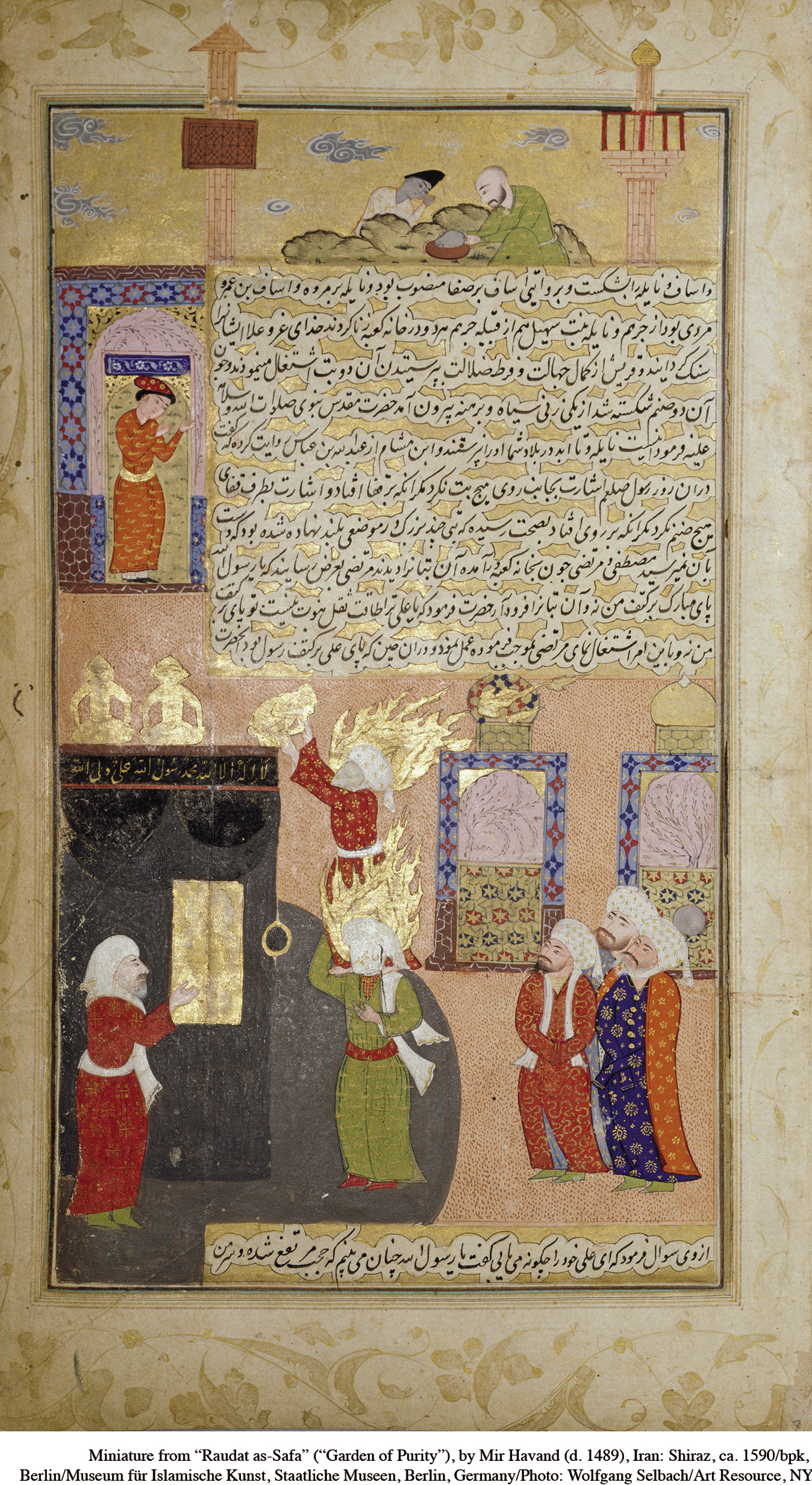Ways of the World with Sources
Printed Page 405
Source 9.4
The Destruction of the Idols
In 630, just six years after the battle at Badr, Muhammad and some 10,000 soldiers triumphantly entered Mecca, almost completely without violence, and in a posture of reconciliation rather than revenge. In sharp contrast to traditional Arab practice, Muhammad issued a general amnesty for those who had opposed him. Then he turned his attention to the religious rationale of his entire movement. Riding his favorite camel, Muhammad circled the Kaaba seven times, shouting “Allahu Akbar” (God is greater), thus declaring the triumph of the Believer’s Movement. Refusing to enter the Kaaba until it had been purified from its idolatry, Muhammad ordered its 360 idols and paintings removed. He then smashed each one, reciting a Quranic verse: “The truth has come and falsehood has vanished away.” Muslim sources record that the Prophet invited his cousin and son-
Source 9.4, a fifteenth-
- What view of pre-
Islamic Arab religion do the images of the idols suggest? - What fundamental religious teachings or spiritual truths does this painting seek to convey? How might you understand the Muslim concern with idolatry?
- Some traditions suggest that Muhammad ordered pictures of Mary and Jesus within the Kaaba to be left intact. What purpose might this tradition serve?
